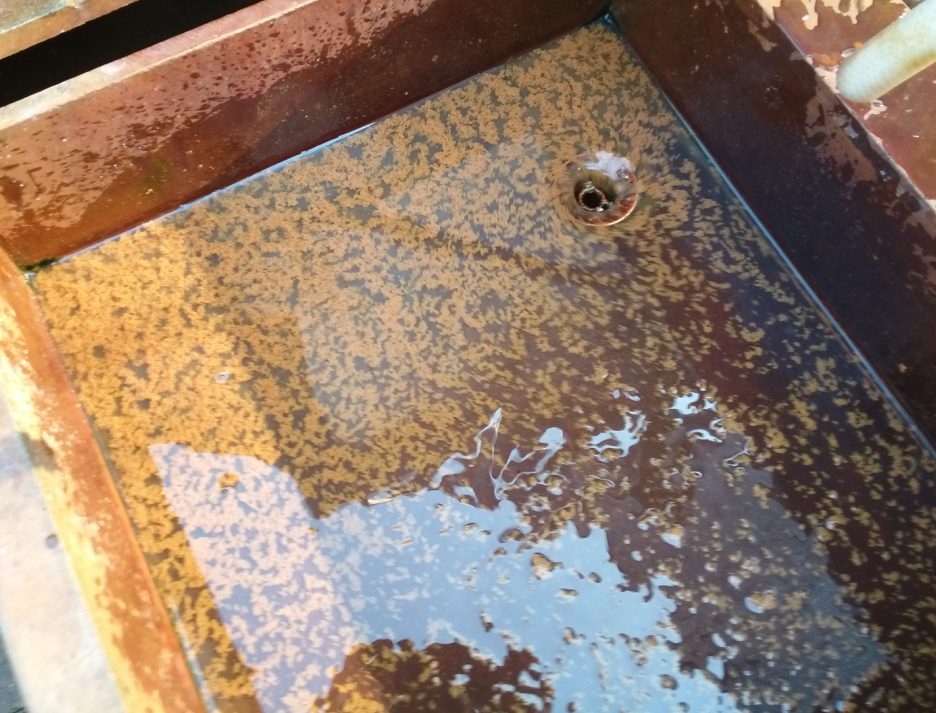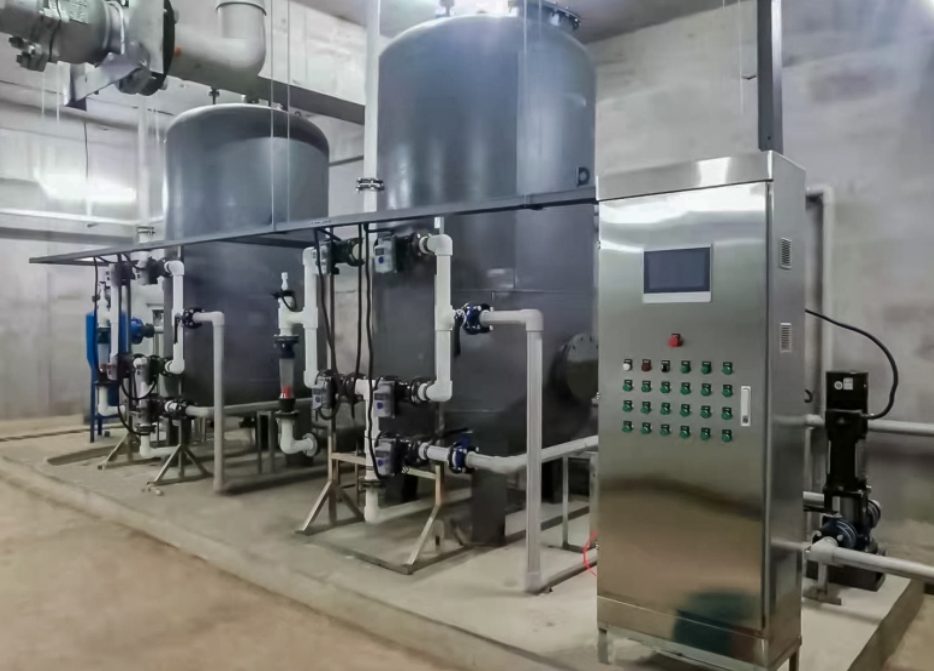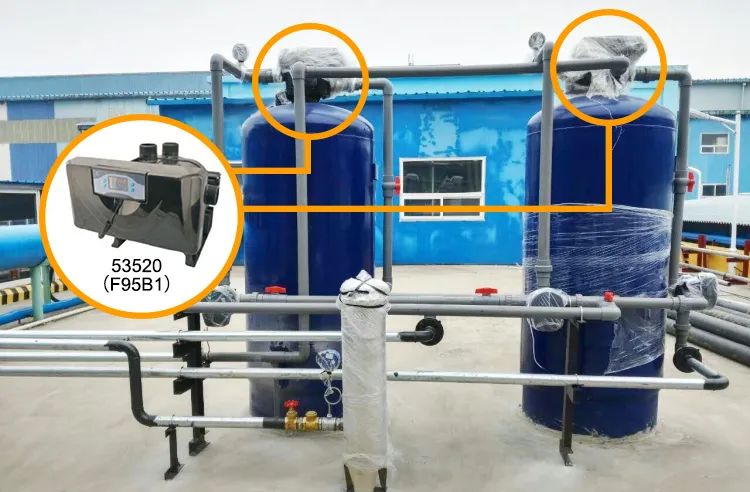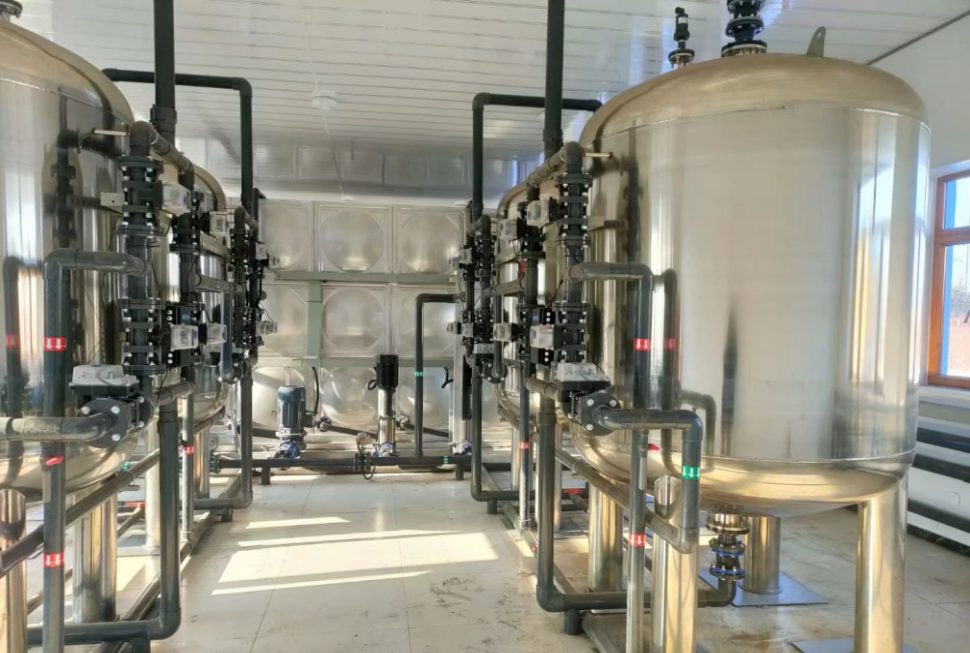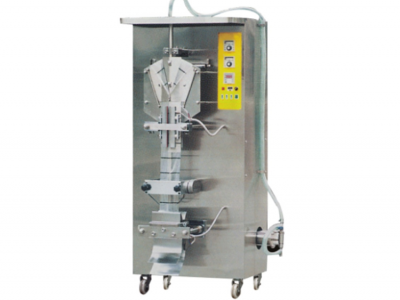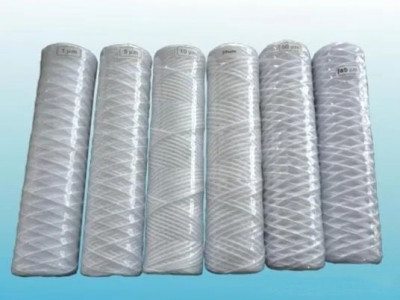Groundwater containing iron and manganese is widely distributed in our country, and iron and manganese can coexist in groundwater, and often exist in the form of divalent iron and divalent manganese with high solubility.
Water rich in iron ions will make the water yellow, with obvious rusty odor, easy to make clothes and utensils coloring yellow, but also easy to promote the growth of iron bacteria in the pipe network, pollution of water for living, production, and damage to the pipeline. In addition, high iron content of water into the boiler and heat exchange equipment, easy to generate iron oxide scale and scale corrosion; high iron content of raw water into the ion exchanger, easy to make resin poisoning.
Manganese is one of the necessary trace elements for human body, plants and animals, but excessive intake of manganese can cause poisoning, and long-term exposure to manganese compounds can also cause manganese poisoning. Manganese-containing water will make the water colored, smelly and tasty, affecting the quality of products in textile, papermaking, brewing, food and other industries, and also polluting household appliances, and there will be blackish or grayish stains on washing clothes.
Water rich in iron and manganese ions will cause greater harm to human life, industrial and agricultural production, so it needs to be treated before use.
Iron Removal
Divalent iron in groundwater is unstable and is often removed using aeration. Divalent iron salts in groundwater are usually in the form of iron bicarbonate Fe(HCO3)2. Generally, the groundwater is pumped into the aeration tank, and compressed air is passed into the pipeline or the aeration tank or mixed into the air in the pipeline by jetting method, so that the oxygen in the air is fully mixed with the water to oxidize the divalent iron into the trivalent iron; and then filtered through manganese sand or other manganese removing filter material to remove the iron oxide precipitates.
Natural manganese sand (the main component is manganese dioxide) is a good catalyst for oxidizing divalent iron to trivalent iron. When the pH value is greater than 5.50 (generally should keep the pH value of raw water as 6.5-7.0 to get better treatment effect), it can accelerate the process of oxidizing divalent iron into trivalent iron. The chemical reaction equation is as follows:
4Fe2+ + O2 + 8OH- + 2H2O → 4Fe (OH) 3↓
Oxidation process, the water must maintain sufficient dissolved oxygen, in order to oxidize divalent iron into trivalent iron, and after hydrolysis of colloidal iron hydroxide to brown flocs precipitate, can be filtered through the manganese sand filter layer will be removed from the iron.
Manganese removal
Manganese oxidation is basically the same as iron removal, manganese-containing water after aeration through the manganese sand filter media, in the manganese sand filter media surface of the manganese active membrane role, Mn2+ is oxidized by the dissolved oxygen to MnO2, adsorbed on the surface of the filter media, so that the membrane can be renewed, the process is also an autocatalytic reaction. Its reaction formula is:
2Mn2++O2+4OH- → 2MnO2↓+2H2O
Divalent manganese salts in the water in the filtration, may also be due to MnO adsorption and the following chemical reaction:
MnO2 -H2O + Mn2+ +2OH- → MnO2 -MnO-H2O + H2O
Manganese sand loses its manganese removal performance when it combines with Mn2+ to form manganese trioxide. It is necessary to add oxidizer to regenerate. Make MnO2 -MnO re-oxidized into MnO2. general production more use to add chlorine to the water (Cl2) method, to restore the manganese sand manganese removal performance. The reaction formula is:
MnO2 -MnO-H2O+2H2O+Cl2 → 2MnO2 -H2O+2HCl
Manganese removal is far more difficult than iron removal. When iron and manganese coexist, iron interferes with manganese removal. In the filter layer, the removal of iron must be completed before manganese removal can begin, so to obtain stable manganese removal, the concentration of Fe2+ should not be more than 2 mg/L.
Removal method of iron and manganese coexistence
When the content of iron and manganese in the raw water is high, containing more than 5mg/L of Fe and more than 1.5mg/L of manganese, if manganese sand is used for treatment at the same time, due to the fact that iron is easier to be oxidized than manganese, it is more difficult to oxidize divalent manganese to tetravalent manganese. Therefore, it is generally necessary to use the secondary filtration method, i.e. to remove iron first, so that the concentration of Fe2+ is lower than 2mg/L, and then remove manganese. The process is as follows: groundwater → deep well pump (frequency conversion pump) → aeration → primary filtration (iron removal) → secondary filtration (manganese removal).
When the iron and manganese content in the raw water is low, the iron content is lower than 5mg/L, manganese content is lower than 1.5mg/L, a filtration can be used to remove. The process is as follows: groundwater → deep well pump (frequency conversion pump) → aeration → filtration (while removing iron and manganese).
